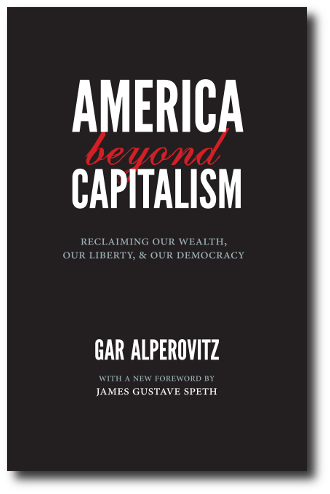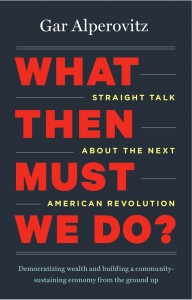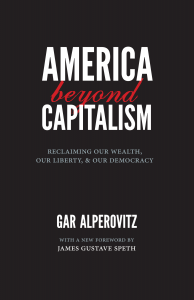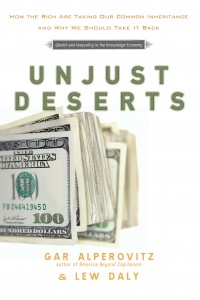This piece originally appeared in Truthout.
Inspired by the Occupy movements around the country, nearly two-thirds of a million Americans joined credit unions in the brief five weeks between the beginning of October and “Bank Transfer Day,” November 5, 2011.
The mass movement created $4.5 billion in deposits – another sign that large numbers of people, fed up with Wall Street, are ready to act in some fashion to change the system whenever a plausible opportunity arises.
“Change the system”? Not simply move money to demonstrate anger at the big banks? To be sure, for some, the move was simply one of anger. For others, however, there was a clear sense that the humble, down-home American credit union was somehow a cleaner, better institution. In fact, credit unions are more than that; they are democratized “banks” that suggest practical ways to begin to build, however tentatively, in the direction of a more democratic economy. Nor are they marginal: credit unions hold roughly a trillion dollars in deposits, and involve more than 90 million Americans as participant owners.
Most credit unions help finance routine consumer investments – especially the purchase of homes and automobiles. But credit unions start to get interesting when they go beyond simply being nonprofit, one-person/one-vote cooperative banks and start working actively to open a more expansive direction. The Bronx’s Bethex Federal Credit Union, founded in 1970 by Joy Cousminer and the “welfare mothers” in her adult education class, is a good example.
Bethex began as a purely volunteer project to meet the needs of its immediate community. It now serves over 9,000 members, has $16 million in deposits and continues to empower local residents with a range of financial services, including savings and checking accounts; children’s accounts; holiday accounts; ATM and Visa cards; and, importantly, student, auto, mortgage and business loans. Other examples include the Alternatives Federal Credit Union, which lends to cooperatives, worker-owned enterprises, small businesses and community groups in Ithaca, New York. It also invests in programs such as the BR MicroCapital organization at Cornell University, which provides customized services and microloans to self-employed community residents.
Nor are all efforts small-scale. The Hope Credit Union in Memphis has lent over $1.6 billion to more than 90,000 individuals in the Mississippi Delta region of Tennessee and in Katrina-impacted areas and other distressed communities throughout Arkansas, Louisiana, Mississippi and Tennessee. In 2010, it lent millions to companies operating in poverty-stricken communities, provided two-thirds of its mortgages to low-income borrowers and financed the renovation of a 62-unit apartment complex.
Other credit unions, particularly those registered as community development financial institutions (CDFIs), use the pooled financial resources of members to help local economies in more far-reaching ways. In North Carolina, the Self-Help Credit Union not only makes loans to small businesses and local nonprofits, but also has financed major development projects to revitalize downtown Durham and, through its Center for Responsible Lending, fights for the financial rights of consumers through intense casework and legislative advocacy.
None of this is to suggest that credit unions offer more than one modest line of attack to help restore a decaying economy, nor to suggest that they cannot be improved by doing more to expand their membership in minority communities and by becoming much more active development agents. An effort, in fact, is underway to expand beyond traditional strategies by chartering a Worker Cooperative Federal Credit Union, which would both provide financial services to existing worker cooperatives and use pooled assets to finance new cooperatives – something traditional banks have been reluctant to do.
This approach and a variety of other little-discussed institutional strategies suggest that traditional credit unions are not alone in working to slowly lay the practical basis for long-run change at the foundational, community level of the American economic system. Among other evolving “new economy” building blocks are more than 11,000 worker-owned companies, 4,500 neighborhood corporations, 20,000-plus co-ops, hundreds of social enterprises, 2,000 municipal utilities, and a variety of land trusts and other alternatives to the large corporation.
The unexpected explosion of the Occupy movement and the success of “Move Your Money Day” – and, along with these, other little-noted large-scale developments – suggest that many Americans may be quietly beginning to get much more serious about wanting an economy owned and managed on a more democratic basis. If so, the preliminaries of a new economic politics may also be beginning to emerge just below the radar of most nationally focused media efforts. Its central judgment appears to be that if it is possible to run nonprofit banks for the benefit of 90 million members, there is no reason other institutions can’t be shaped to make democratization a top priority – and perhaps, one day, an overall economy that is of, for and by the 99 percent.
This work by Truthout is licensed under a Creative Commons Attribution-Noncommercial 3.0 United States License.
 AMERICA BEYOND CAPITALISM
AMERICA BEYOND CAPITALISM





 Agenda
Agenda  Posterboard
Posterboard 